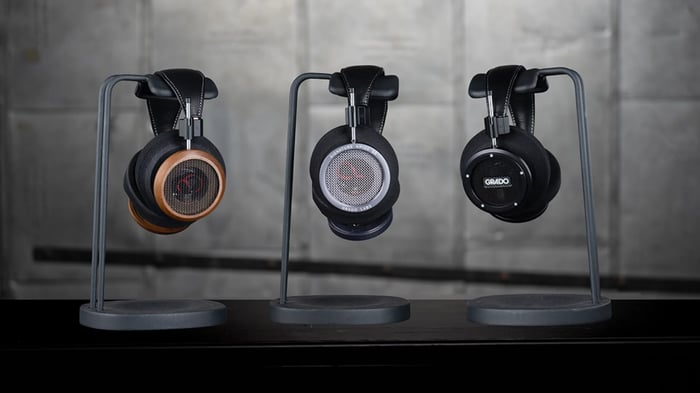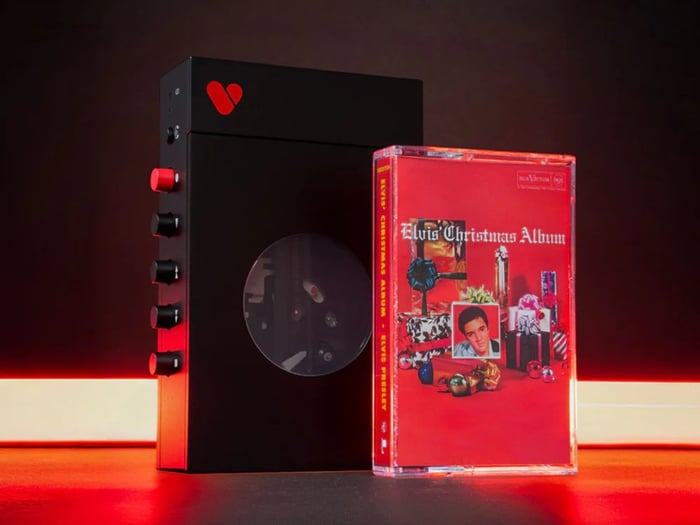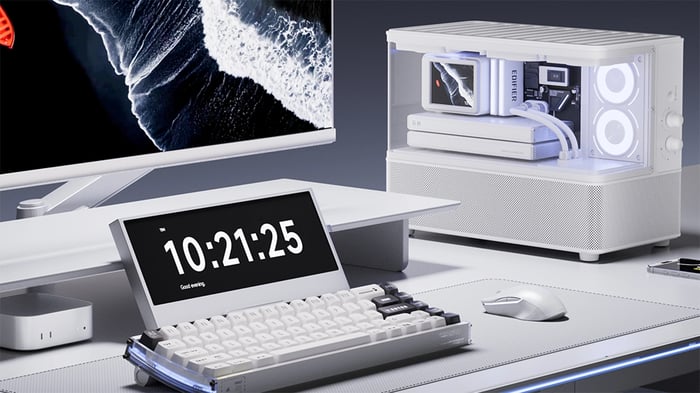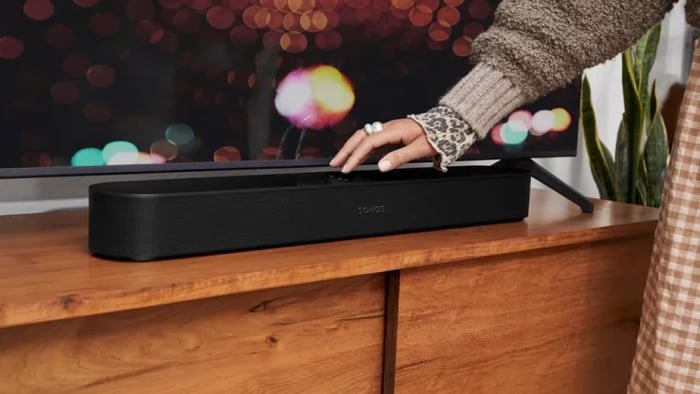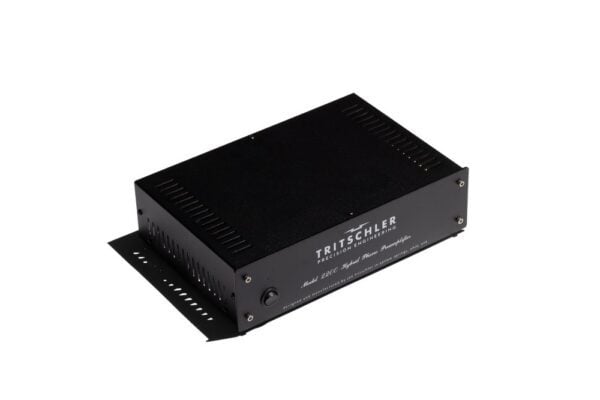
Tritschler Precision Engineering Model 2200 Phonostage Review: Elevating Vinyl Playback
Tritschler Precision Engineering Model 2200 Phonostage Review: Elevating Vinyl Playback
Experience superior sound quality with the Tritschler 2200 phonostage, a refined marvel that breathes new life into your vinyl collection.
If you’ve ever been captivated by the magic of vinyl and the subtle nuances that a great phonostage can reveal, then the Tritschler Precision Engineering Model 2200 might just be your new best friend. As a longtime vinyl enthusiast, I was thrilled to get my hands on Joe Tritschler’s latest creation—a device that has truly transformed my listening sessions into vivid, emotionally rich experiences.
The Legacy of Joe Tritschler: From TPAD 1000 to Model 2200
Joe Tritschler is no stranger to audiophiles or phonostage aficionados. You might recall his TPAD 1000 moving-magnet phonostage, which earned multiple Editors’ Choice Awards and a devoted following. Known affectionately by himself as Dr. “Crazy Joe,” Tritschler’s reputation extends well beyond quirky nicknames. With a strong background as an engineering lecturer at Wright State University and professional recording engineer, his work designing custom studio gear is respected nationwide.
Recently, Joe introduced the Model 2200, an evolved phonostage that builds upon his long-standing 24-year refinement of the TPAD 1000 and the earlier Model 1000 MkII. Both designs take inspiration from Erno Borbely’s 1985 all-transistor circuit published in Audio Amateur magazine. Borbely himself contributed to legendary Dynaco amplifiers, making this lineage all the more impressive.
What Sets the Model 2200 Apart?
The biggest leap with the 2200 is its use of compound gain blocks based on Alan Kimmel’s hybrid mu-stage design. Each stereo channel has two gain blocks, each consisting of one half of a 6922 twin triode tube coupled with a FET active load. Importantly, all voltage gain is triode-based, while the FETs and their bias resistors are individually tested for long-term reliability.
Joe swapped out the previously used Russian 6922 tubes for carefully selected Slovakian JJ Electronic tubes, which noticeably uplift the sonic character. You’ll spot two pairs of red LEDs on the top of the chassis—not just for show but serving the crucial function of establishing cathode bias for the triodes. This clever design replaces the typical cathode resistor and bypass capacitor, leading to dramatically improved low-level resolution.
“Dispensing with a conventional cathode resistor and bypass cap is said to have significantly improved low-level resolution.” – Joe Tritschler
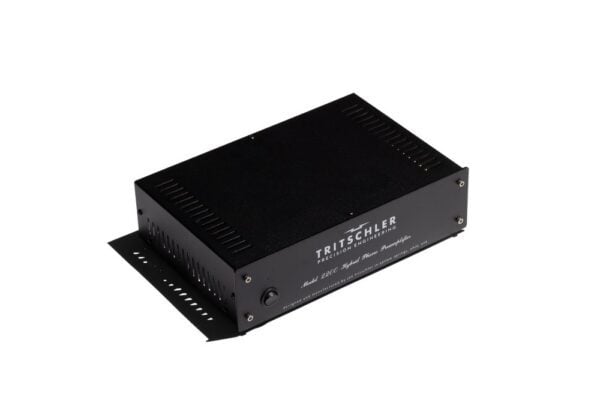
A Sonic Leap Forward: The Listening Experience
Initially, Joe was motivated by customer requests for greater gain, and the mu-stage circuit allowed a tidy 6dB boost to a total of 40dB without adding complexity. But what caught both Joe and me by surprise was the fresh, vibrant “breath of life” that this circuit breathed into the sound.
My first listening sessions paired the 2200 with the B&O Beogram 8000 turntable and a 20CL contact-line cartridge. The highlight was spinning the 45 RPM Music Matters Jazz limited edition of Herbie Hancock’s Empyrean Isles. Rudy Van Gelder’s masterful recording blossomed with expansive soundstage depth and razor-sharp image outlines. It was clear from the start that the 2200 was no ordinary phonostage—it deserved a spot in any serious reference system.
Flexible and Powerful: Cartridge Compatibility and Step-Up Transformers
The 2200’s 40dB gain covers moving-magnet cartridges and high-output moving coils, though I chose to add a 1:10 step-up transformer (SUT) for an extra 20dB, pushing total gain to 60dB. This setup worked beautifully with a reflected impedance of about 1000 ohms from the phonostage’s 100k ohm input.
First up was the Audio Interface CST-80 step-up transformer, based on Deane Jensen’s classic JT-44K-DX transformer design from 1980. This pairing delivered sparkling upper octaves with precise transient control and knockout bass punch. Orchestral recordings revealed a lush lower midrange that captured concert hall reverberation with stunning realism. Female vocals shimmered with authentic tonal colors, while soprano ranges soared with purity and grace. The music’s emotional range felt alive and compelling.
Switching to the PJL Electronics step-up transformer—built around Lundahl LL9226 transformers—provided an even cleaner, livelier sound in the highs. Listening to Gershwin’s Rhapsody in Blue performed by the Boston Pops, the phonostage brought out the recording’s stunning dynamic range and sonic intricacies. Notably, the acoustic signatures of iconic venues like Boston Symphony Hall came through clearly, helping to pinpoint subtle bass nuances in other recordings.
Comparing with Other Preamps: A Balanced Perspective
Inserting different line preamps into the chain offered fascinating contrasts:
- The Audio Research LS25 MkII line preamp added vivid tonal color and expansive soundstage depth but sacrificed some bass authority.
- The Classé DR-6L line preamp delivered powerful bass impact that anchored the music with authority.
- The PrimaLuna EVO 400 tube phonostage added a lush tube-like warmth and more refined midrange textures, but the 2200 held its own admirably.
On the Revox B795 linear-tracking turntable with the Audio-Technica 400MLa moving-magnet cartridge, the 2200 again showed its mettle. Paired with the Klyne Audio 6LE-4.1 line preamp upgrade, it delivered thunderous tympani strikes, lightning-fast transients, and razor-sharp mix separation. A slight upper-midrange emphasis added excitement and highlighted the soundstage's depth, especially for vocals.
The Pass Labs XP-12 line preamp, running the PrimaLuna EVO 400 monoblocks, created a beautifully neutral sound with lively dynamics and intimate presence. Classic jazz like the Phil Woods Quintet’s Song for Sisyphus came alive, showcasing the phonostage’s ability to handle direct-to-disc recordings with aplomb.
Final Thoughts: A Phonostage That Commands Attention
The Tritschler 2200 phonostage is a shining example of how thoughtful design and meticulous execution can deliver extraordinary sound quality under $2,000. For me, it’s more than just gear—it’s a gateway to rediscovering the joy of spinning vinyl. Few phonostages, regardless of price, have kept me glued to the turntable for days on end, but this one has earned that honor.
Specs & Pricing
- Gain: 40dB
- Input impedance: 100k Ohm / 48pF
- Dimensions: 12″ x 8″ x 3¼”
- Weight: 6 lbs
- Price: $1600
Tritschler Precision Engineering, LLC
Yellow Springs, Ohio
Associated Equipment
- Loudspeaker: Fyne Audio F703SP
- Turntable: Kuzma Reference, Revox B795, B&O Beogram 8000
- Line Preamplifier: Classé DR-6L, Klyne Audio 6LE-4.1, Audio Research LS25 MkII, Pass Labs XP-12
- Power Amplifier: Audio Research VS115, PrimaLuna EVO 400
- Cables: Kimber Select KS1016 & KCAG interconnects; 8N OFC speaker cable
- Accessories: Sound Application CF-X & TT-7 power line conditioners; Duende Criatura Tube Rings
FAQ
- What is the main gain offered by the Tritschler 2200 phonostage?
It provides 40dB of gain, suitable for moving-magnet and high-output moving coil cartridges. - Can the 2200 be used with a step-up transformer?
Yes, it works well with step-up transformers to increase gain, with a common choice being a 1:10 ratio. - What tubes are used in the Model 2200?
Selected Slovakian JJ Electronic 6922 twin triodes are standard, replacing older Russian tubes for better sound. - How does the 2200 compare to the older TPAD 1000?
The 2200 offers improved gain, better low-level resolution, and a notable sonic leap in clarity and detail. - Is the Tritschler 2200 suitable for audiophiles on a budget?
Yes, at around $1,600 it provides superb sound quality often found in much pricier phonostages.
If you’re inspired to bring the sonic magic of the Tritschler 2200 into your own listening room, why not celebrate your love of vinyl by shopping for your favorite album cover poster at our store? It’s a tasteful way to honor the art and music that make every spin special. Explore our collection here.
 | DISCOUNTGET 30% OFF*Use code on your next order:
|
* This post may contain affiliate links, meaning we earn a commission if you make a purchase through these links, at no additional cost to you.



